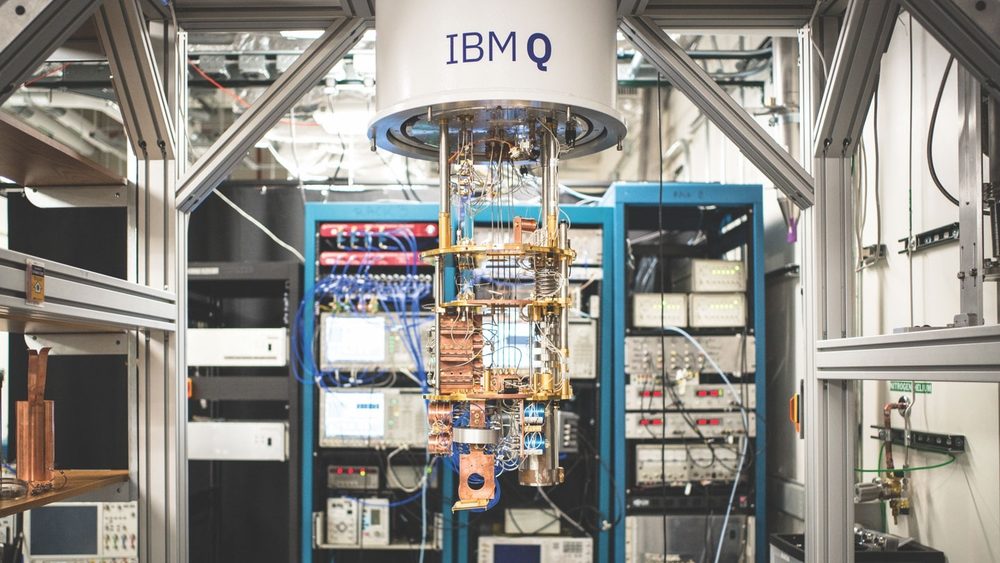The experts of IBM They are aware that they still We will have to wait several years to be able to perform sophisticated quantum calculations consistently. This requires quantum computing to be developed with its errors corrected, and it is unlikely to happen before 2030. But the company believes that it is already possible to perform limited, although useful, calculations using quantum systems. That is why it has just announced several new developments focused on making it possible.
These are changes that, taken together, significantly improve both the quantum hardware and software that were available, and allow for more efficient and less error-prone operations. The result is a system capable of performing the most complex calculations seen to date using IBM hardware, making them optimistic that users of their quantum systems will discover calculations where quantum hardware offers advantages.
The company, as Ars Technica recalls, was one of the first to reach 1,000 qubits, but each of them had an error rate that meant that algorithms that tried to use all the qubits in a single calculation would produce an error without being able to do so. avoid it.
Since then, IBM has focused on improving the performance of smaller processors, and has now announced part of the introduction of the second version of its Heron processor, which has 156 qubits. Although it has less power, it is still above that of conventional computers, and it should also be able to operate with a low enough error rate to be able to perform calculations.
The development of Heron 2 has focused on eliminating what are known as two-level system errors, or TLS. These are the failures that IBM blames for the limitations in the coherence of its systems, which arise when defects can resonate at a frequency capable of interacting with a nearby qubit, and it then loses the quantum state it needs to participate in the calculations. That is, a loss of coherence occurs.
These problems can be avoided by making small adjustments to the frequency at which the qubits operate, something that is possible when the Heron chip is being calibrated before being opened to general use.
On the other hand, IBM has also rewritten the software responsible for controlling the system while it is in operation. As a consequence, they have managed to speed up the calculations they carry out, and in some cases they have gone from taking 122 hours to complete to just a couple.
This is good for customers because they pay for the time they are using the hardware. Additionally, since some errors occur randomly, the less time spent performing a calculation, the less likely errors are to appear.
Of course, despite the improvements, errors still appear in significant calculations, which makes IBM continue working to develop error-corrected qubits. That is, it is focusing on what it calls error mitigation. The problem is that the method they have developed to do it, a processor noise reduction function at different levels, is a very complex task computationally speaking. This difficulty also grows with the number of qubits.
Therefore, although making error mitigation calculations that simulate computer behavior on the same hardware is simpler, there is a risk that they may be computationally intractable. But IBM has taken steps to optimize the process and prevent this from happening, through algorithmic improvements. But it does not mean that the difficulties inherent in error mitigation disappear. Of course, they allow the method to be used with larger quantum circuits before errors make the calculations unusable to work with.
Combining all these techniques, IBM has used this error reduction configuration to model a simple quantum system which it has called the Ising Model. This model produced reasonable results after performing 5,000 individual quantum operations known as gates.
It is such an acceptable result that researchers are beginning to use the hardware of these calculations to simulate the electronic structure of certain simple chemical compounds, such as iron sulfide compounds. This also indicates that quantum computing is becoming a viable scientific tool.
Of course, IBM points out that this It does not mean that we are already at a point where quantum computers can surpass classical hardware clearly and consistently. To achieve this it is necessary to surpass the best possible classical method with the quantum one, it is something that needs an iteration. That is, you have to try different quantum methods to overcome the classic one. They estimate that there are about two years left to achieve it.but since it is an iterative process, there are no concrete predictions about when it will be achieved.











